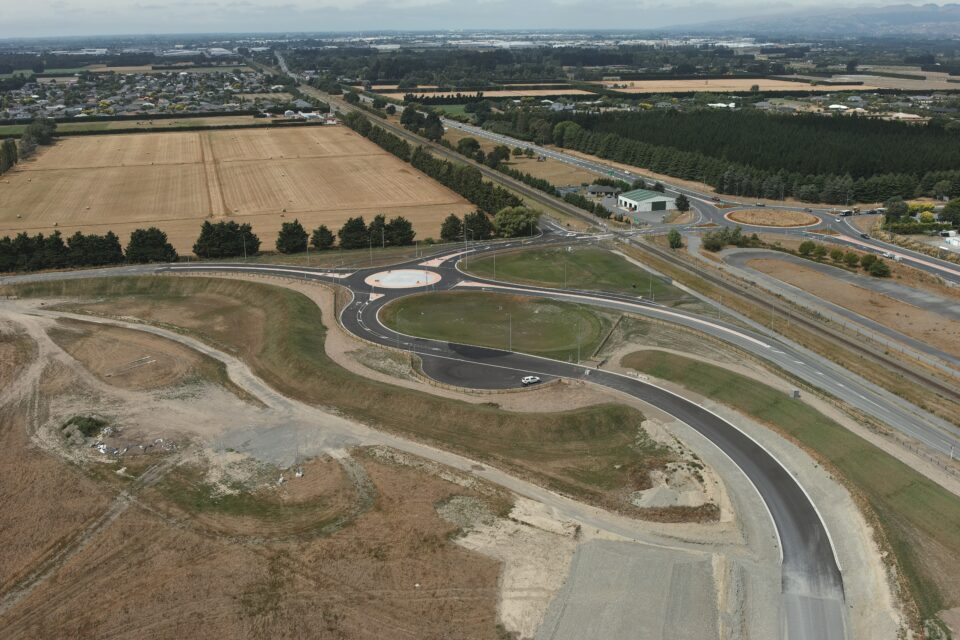New specifications for roading aggregate put demands on both the quarry industry and those within councils to ensure the right specification materials are used for roading projects, says Aggregate and Quarry Association CEO Wayne Scott.
The old saying that success has many fathers, but failure is an orphan resonates for those of us involved in helping ensure our roads are built to endure.
After a couple of notable failures with new state highway pavements in Waikato and Kapiti, the NZTA, as part of its response, commissioned a report on aggregate supply and demand. The inconsistency of aggregate quality was found to be part (just part) of the problem; the Wilson report recommended developing more robust and standardised aggregate data collection and specification frameworks.
The AQA and the industry it represents has worked with the Transport Agency, Civil Contractors NZ, consultants and CETANZ (civil engineering testing professionals) over three years to update our aggregate technical specifications, some of which were 40 years old.
The new specs for M04 basecourse have now been in use for a couple of years across four aggregate classes and two new M03 sub-base specs are now emerging.
In short, Class 1 and 2 M04 is suitable for major and then lesser state highways with M03 Class 5 sub-base used under it; Class 3 and 4 M04 is destined for minor roads and will use M03 Class 6 sub-base.
The new specs widen the range of materials used for pavements. But we need to focus on ensuring the appropriate materials are used for a roading project. Already the AQA is hearing of tenders being sought for over-spec aggregate. If you specify a class that’s above what’s actually required, you are going to be costing your ratepayers (or taxpayers if it’s a state highway), bucketloads.
Councils should also be well aware that the Local Government System Improvements Amendment Bill currently before Parliament will require compliance with new specifications and be subject to higher scrutiny as part of performance reporting.
Our new draft National Infrastructure Plan will hopefully guide our roading and wider infrastructure spend for coming decades. In the AQA’s submission, I noted that aggregate is a locationally constrained resource.
Just how much might have been indicated by a show of hands at July’s QuarryNZ conference – only 10 per cent of quarry operators in the room could actually make Class 1 base-course. This highlights potential issues for supply of Class 1 from the lower North Island, Bay of Plenty and Northland in particular.
Councils need to recall that the cost of a tonne of aggregate doubles when it has to travel 30 kilometres from a quarry; additional costs follow every extra kilometre. If you specify an unnecessarily high-spec basecourse and sub-base it may mean trucking it hundreds of kilometres.
Quarries do face considerable increases in costs to meet the new specs. We estimate from less than $1.50 a tonne for some bigger sites to perhaps $5 a tonne for a smaller site.
An upside of those extra costs – to ensure consistency across the new M04/M03 specs, is that the criteria has been widened for lower specification aggregates.
Councils are able to use Class 2, 3 and 4 specification aggregates where appropriate. Perhaps in the past higher-spec’d materials were sought as an insurance against any risk of uncertain consistency; that’s no longer necessary nor sustainable. Working with the NZTA-led group, a process of control and statistical analysis was developed, acknowledging and allowing natural variation in aggregate while fostering improved quality controls which aim at consistent results for all aggregate, even that used in low-spec environments.
It may well be that locally maintained unsealed roads are a good option for smaller communities as they are cheaper to maintain and can be built out of locally-sourced materials and mean more roading per $ can be delivered.
Alongside councils getting the right type of aggregate for a project, they need to remember that quarry materials are not universally available and can only be sourced from where they are located.
This highlights the need for their planning to provide for adequate access to resources at workable locations.
Costs rose markedly when there’s a lack of local planning for projects. Transmission Gully and Gisborne Airport sourced aggregates from quarries that sometimes involved return trips of hundreds of kilometres.
Aggregates are not just needed for roading projects but for road and rail transport corridors, major builds and for affordable housing development. Councils also need to consider the critical need to have ready access to local aggregates after climatic and other natural disasters strike.
While the national standards are being adopted, councils retain the ability to adjust certain specifications to accommodate the availability of regionally-sourced aggregate, avoiding unnecessary costs and supply disruptions, provided safety and performance criteria are met.
They can also now look at innovative road designs that utilise available local materials. Standard specifications and designs, including a reluctance to consider more durable, resilient options such as concrete and asphalt, have led to unnecessary added cost and delivery delays.
Councils are now encouraged to engage closely with the Aggregate & Quarry Association (AQA) and technical experts to access training, planning support, and updated technical advice. Let’s have more success with projects we can all be proud of.
For further information or help contact Mike Chilton, the AQA Technical Adviser: tech@aqa.org.nz


